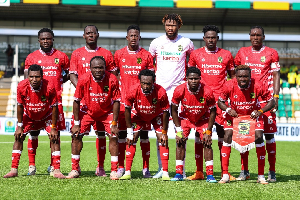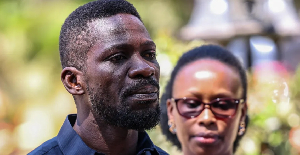By Tommy Ekpe [The Business Analyst]
The upgrade of the switchyards of Akosombo generation station and Volta substation is 70 per cent complete and is expected to be energized in June this year.
This is in spite of the delays experienced due to the inability of the contractor to work daily since the necessary outages can only take place at weekends.
The project is part of the first phase of the West Africa Power Project (WAPP) whose objective is to increase access of WAPP "Zone A" coastal states (Benin, Cote d'Ivoire, Ghana, Nigeria and Togo) to more stable and reliable electricity as a means to alleviate power supply deficits and/or to reduce their collective vulnerability to drought-induced power supply disruptions. According to the Implementation Status Results of World Bank Assisted Regional Projects released last week, the procurement process for all project components has been completed and contracts signed. It said the pace of fund disbursements had accelerated substantially and a further $7m is expected to be disbursed before the end of this Fiscal year, at which point 95% of the available funds are expected to have been used. The project, whose implementing agency is the Volta River Authority (VRA), is estimated at $40 million out of which $32.8 million has so far been disbursed. The report described as satisfactory the overall implementation progress, while it considered the progress towards achievement of project development objectives as moderately satisfactory.
Giving an overview of the implementation status, the report stated that besides the initial objective of the project, which is to increase power transfer capability, the energization of the T-line has reduced the need for reactive power in the system and has improved voltage levels and supply to Greater Accra. “The Aboadze-Volta 330 kV transmission line and substations were completed in late 2009 and have been energized, while data engineering for the SCADA/EMS upgrading component has been completed and equipment installation in the Gridco control centre is ongoing”, it stated, adding that completion is expected in mid-2012. “The expected outcome of this component is to improve monitoring and control of power exchanges in the WAPP system”, it said.
The report said the expected outcomes of the project include: Increasing cross-border electricity trade between WAPP "Zone A" Coastal States; Reductions in power transfer losses in the principal transmission networks of the WAPP "Zone A" coastal states and more cost efficient coverage of peak power demand through economy power exchanges between WAPP "Zone A" coastal states.
“The WAPP APL 1 project would be considered successful if it provides ample capacity for unconstrained cross-border electricity trade between the five ECOWAS Member States for up to at least 2020”, it indicated.
According to the World Bank, the developmental objective is to be achieved by: (a) implementing a WAPP Cooperation Agreement to facilitate enhanced cross-border power exchanges between the four concerned Transmission System Operators (TSOs), namely CEB, CIE, NEPA and VU; and (b) establishing and fully deploying the cross-border electricity transfer capabilities of the proposed 330kV WAPP Coastal Transmission Backbone.
...But 2nd phase delays
The overall progress of the second phase of the West Africa Power Pool (WAPP) project remains moderately unsatisfactory due to the slow pace of implementation, particularly of the Benin components.
An extension of the closing date of both of the IDA Credits looks therefore unavoidable. However, disbursements have accelerated on the Ghana components. According to the World Bank in its Implementation Status Results of World Bank Assisted Regional Projects released last week, a restructuring will be required to modify the project description to accommodate new components in Ghana and to extend the closing date of the Benin credit.
Touching on the Transmission Infrastructure Development on the Ghana component, the report said the expansion of Asiepke substation is expected to be completed by mid-2012, adding that the rehabilitation of cranes and penstocks at Akosombo are in progress and should be completed by the second quarter of 2012. “Upgrade of the SCADA system is proceeding well and completion is expected in Q2 of CY12. However, there is about $10m of unallocated funds to be reallocated to new components, following the decision to remove the Accra 3rd BSP from the scope of the project”, it stated. About the Benin component, the report indicated that progress on the Togo portion of the 330 kV transmission line (not WB-funded) is slow, stating that tendering is unlikely to begin before March 2012. Completion of works is therefore forecast for mid/late 2014, it said, explaining that since IDA is only financing the supervision of the transmission line, it is tied to the pace of physical works.
“The selection process for the much-delayed engineering supervision consultant will begin in second quarter of 2012 to mesh with the construction timetable”, it stated, adding that the contract for the upgrade of System Control Centers/SCADA, was awarded in October 2011 and signature is imminent. The goal of WAPP is to establish a well-functioning, cooperative, power pooling mechanism for West Africa, as a means to increase access of the citizens of ECOWAS to stable and reliable electricity at affordable costs.
Meanwhile, the first phase of the Inter-Zonal Transmission Hub Project, which is also part of WAPP, which was approved on June 29, 2011, will become effective on December, 31 2015. Email: thebusinessanalystgh@gmail.com
Business News of Thursday, 1 March 2012
Source: Business Analyst












